"Know where I got the idea for this? You won’t guess...” This was accompanied by a grin and the kind of ‘go on, guess anyway’ look common in children and the particularly excitable.
Graham Thompson (who, for the record, falls resolutely into the latter category) had just announced his intention to bivvy on top of famous Lake District monolith Pillar Rock. And, judging by his face, the reason probably wasn’t going to be obvious.
The obvious reasons would include these: Pillar Rock was the site of the first recorded rock-climbing ascent in 1826 – an event whose significance can’t really be understated given that the entire world now climbs for fun.
William Wordsworth immortalised this ‘one particular rock / That rises like a column from the vale’ in his poem The Brothers; Alfred Heaton Cooper painted a classically eerie view of it from Ennerdale; the rock stands on the prow of a high mountain path that sent Alfred Wainwright into pages of ominous-toned scribblings in Book Seven of his Lakeland guides; and its Grade 3 scrambling route is reputedly quite an exciting day out. But was it any of those? Heavens, no.
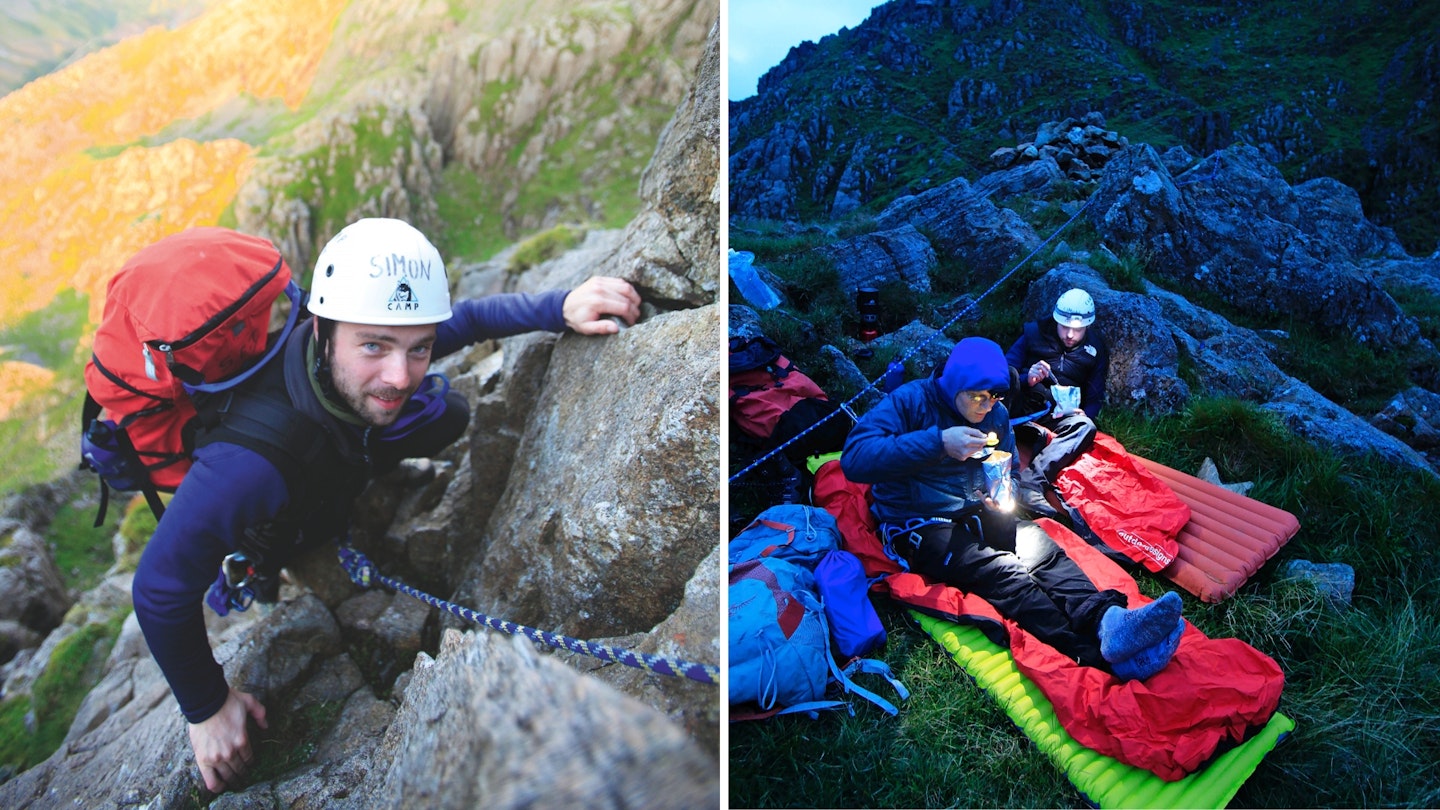
“I saw this picture,” Graham continued, presenting an old Therm-a-Rest catalogue with an expression that suggested it would explain everything. On it were two exceedingly smiley, short-shorted campers, elbow-propped on sleeping mats in the sunshine atop a red rock desert butte – the sort John Wayne and Henry Fonda were always looking for Indians behind. “That could be us.” A pause. “But in Cumbria.”
Forgetting for a moment the intrinsic differences between the Lake District and Arizona – cold and damp being two of note – it was a bewitching idea. It’s a hell of a thing, Pillar Rock: less a pillar than a blade of flaky geology slicing out of its parent peak like a malevolent dorsal fin. It’s most impressive from Ennerdale, but most approachable via the High Level Traverse from Wasdale, upon which our group of a worryingly excessive four – Graham, myself, Jeremy and Tom – soon found ourselves.
As with most adventures, there was an air of uncertainty about our night on the Rock, which took a leap to prominence when we rounded a corner and clapped eyes on it: principally, if we were all going to fit on its compact summit. And, perhaps more presciently, how we might avoid waking up in the night, yawning, looking around absently with bleary contentment, snuggling back down, rolling over and falling to our deaths.
“There’s a fair bit of space up there. I’m pretty sure.” Jeremy had been repeating this phrase with decreasing conviction for several days. “Pretty sure. A fair bit.”
From Robinson’s Cairn, the memorial to Lakeland climbing pioneer and societal pivot John Wilson Robinson, our four pairs of eyes fixed on the rock. I swallowed hard and tried to say something insightful. “Big, isn’t it?”
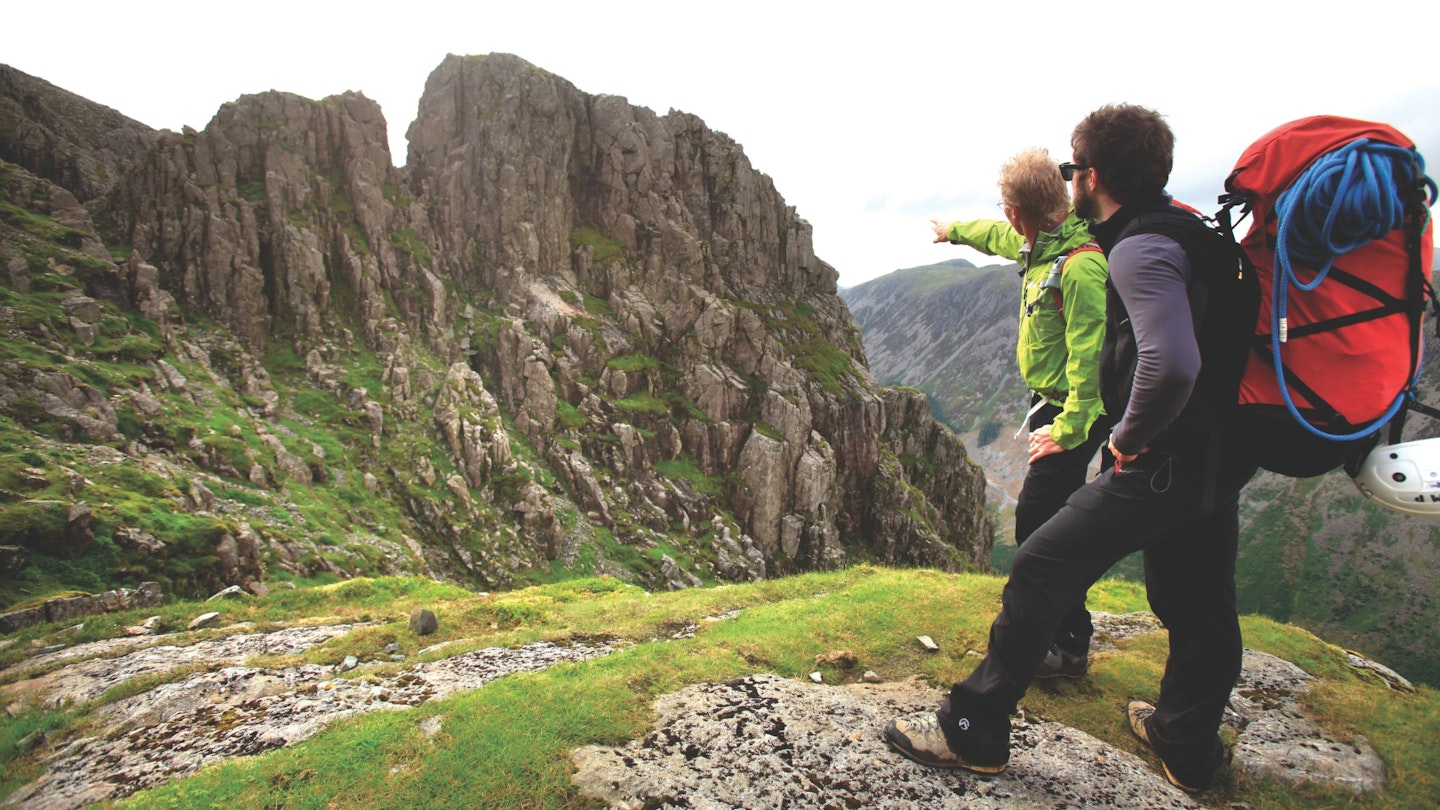
Pillar Rock is something of a commitment. It was the first rock to be extensively developed with climbing routes, and was a proving ground for the skilled and the silly of the climbing world before anywhere else. And in nearly 200 years it has never lost its draw as a climbing Mecca, or its appeal as a Mighty Great Rock: on it are some 95 routes ranging from fairly hard to ridiculous.
The route we were taking was Slab and Notch – the best-known and, it has to be said, the easiest way up the rock. But it’s still a Grade 3 scramble to achieve its 780m top – two grades above my personal comfort zone – and once you’re up, there is really little realistic option but to abseil off it.
All of this takes time, and it was already evening. Were we to get to the top and find that there wasn’t quite the four bivvy-friendly space, it would mean an abseil in darkness off and a hurried relocation, probably down into Ennerdale, probably via scree. Which, aside from defeating the object of the trip, might be rather too edgy for comfort.
It was cold in the shadow of Pillar Rock. Big monoliths like this radiate chill in the evening and morning, and stood next to one in its east-facing shadow you cool to shivers quickly. Crouched in an armpit of crags, I pulled on another layer. My skittish reaction to a minor slip on some rubble served to remind me that I was pretty nervous too.
Graham was busying himself rigging a belay beside the start of Slab and Notch – so-called for the physical features that make up the route. Cutting the silence were the sounds of rope sloughing against rock, the springy clink of Jeremy placing protection, and the occasional crag-echoed shout.
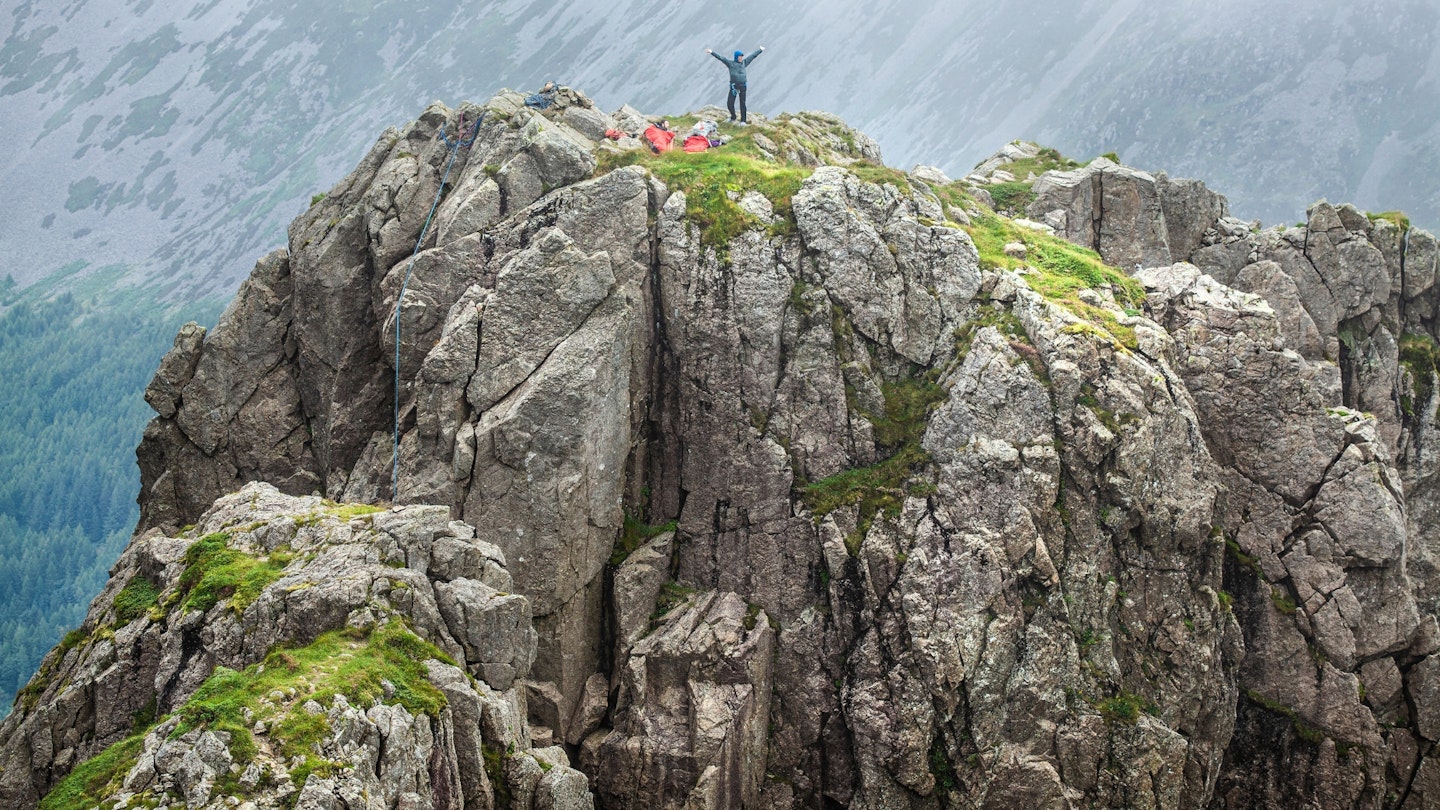
As a non-climber with a height phobia and a distrust of my own ability to keep a cool head, I don’t like these sounds. Together with the clammy feel of the rock, the deep Lakeland exposure and blind edges, they reminded me of the time I climbed Napes Needle – and the little vow I made afterwards to never do anything quite so daft ever again. “Climb when ready.” And all because of a bloody catalogue cover.
The mountains around us were blushing with sunset by the time I took a deep breath and swung out onto the slab. The route ahead began with a traverse, then a climb up and around a ramp (the slab), then the ascent up a gully (the notch). Despite my jangles at the drop – which was a little less sheer than I expected from the ground – the climb was straightforward.
I would even go as far as to say I enjoyed it immensely, the occasional moments of pause allowing me a tentative look around at the richly lit mountains, from the security of solid holds and generous ledges – and the thankful feeling of not being burdened with a destabilisingly heavy pack.
Two things are worth remembering when preparing for a bivvy on something like Pillar Rock. Apart from establishing whether all members of the party are likely to fit – a point that was causing this particular group increasing angst the higher we climbed – you need to remember two things.
Firstly, you need to carry everything you need for the night, including water. Secondly, you have to carry everything you’ll need for the night, including water, up a Grade 3 scramble. This means you have to pack light, and pack tight. Climbing up Pillar Rock and hoping to erect a two-person tent, unroll a camp bed and have a gourmet meal isn’t a clever attitude: to get the most elemental experience, this is an expedition for light of load and frugal of tastes.
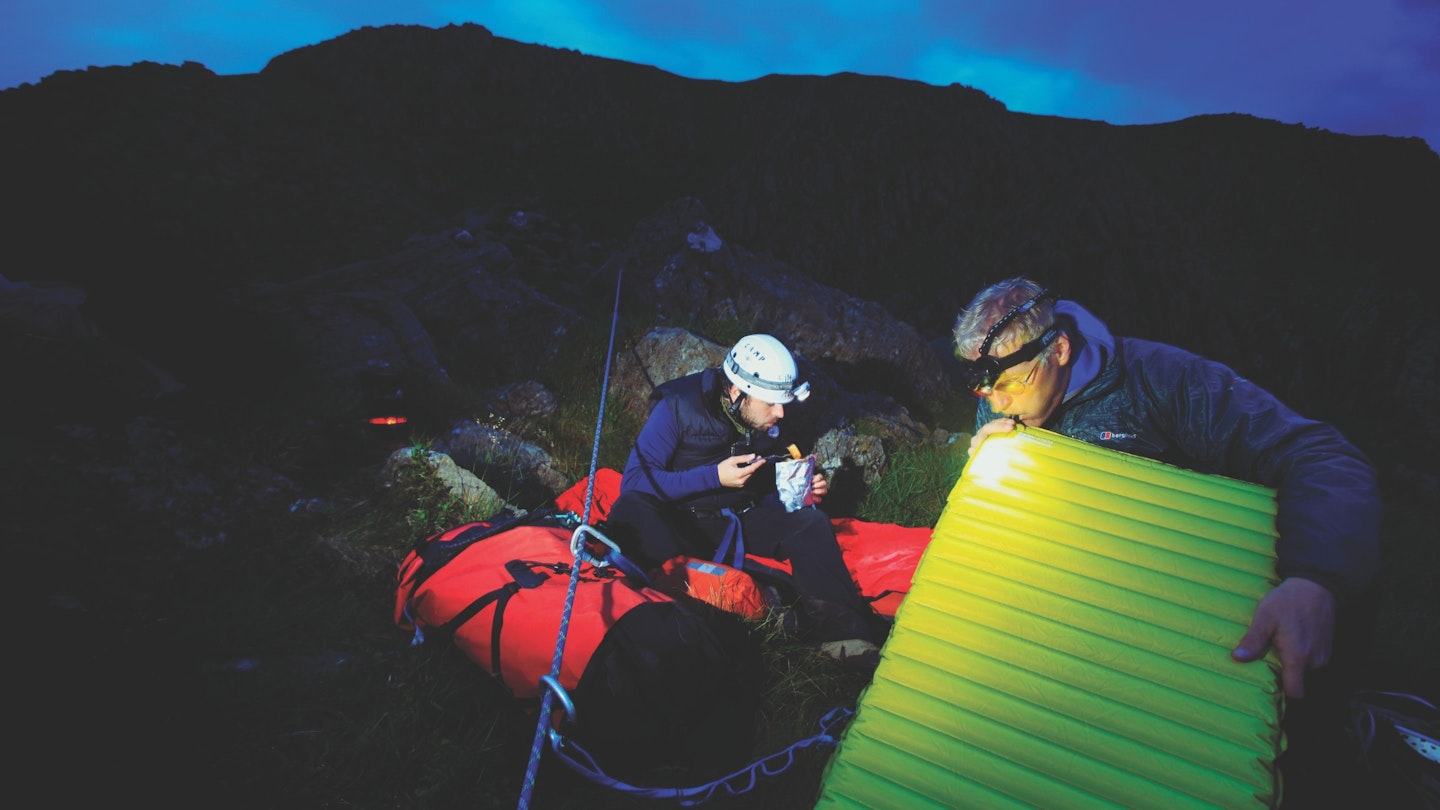
At around 8.30pm we reached the summit of Pillar Rock. Immediately all worries about not fitting, falling off or any discomfort whatsoever evaporated. What I had feared would be an all-fours-inducing pinhead was in fact grassy, spacious and replete with several accommodating platforms at various levels – none of them anywhere near as precarious as I thought.
The way the edges of the rock blended seamlessly into its parent mountain gave the illusion that there was no separation, and therefore no 500ft drop – which did wonders for the nerves. Four could sleep in comfort up here.
After enjoying last light, we unrolled our bivvy bags. Jeremy had rigged a kind of whirligig safety line that ran the length of our sleeping area, to which we were always attached via our harnesses to avoid any sleepwalking tragedies later on. Our dinner plans involved Jetboil-heated Wayfayrers, and soon, sitting atop this historic plinth in weather that certainly wasn’t aggressive, the novelty of our position began to sink in and I began to feel very grand indeed.
The night was spellbinding. I can tell you that at no point did I feel like I was in Arizona on a desert butte. Staring up at a sky of deep brown through the opening in my bivvy bag, watching and feeling clouds brush limply over us, this was England at its creepy, Baskervillian best. I spent the night in kind of a slow doze, until the grey dawn when I was shaken alive by Graham and his permagrin. “Time to get the picture we came for.”
Jeremy was already up, perched near an abseil point he had rigged. Tom was off, on his way up the hillside of Pillar in search of the classic, side-on view of the rock. Before long he stopped, paused and raised his hand.
“Here goes – make like you’re in Arizona.” You would never get the two scenarios confused. No matter how much you squint after how many drinks, you would never mistake Pillar Rock for a desert butte, or Ennerdale for Monument Valley. But look for a few mates enjoying a lightweight adventure on a lofty bivvy, and the sentiment is unmistakeably the same.
Pillar Rock: A brief history
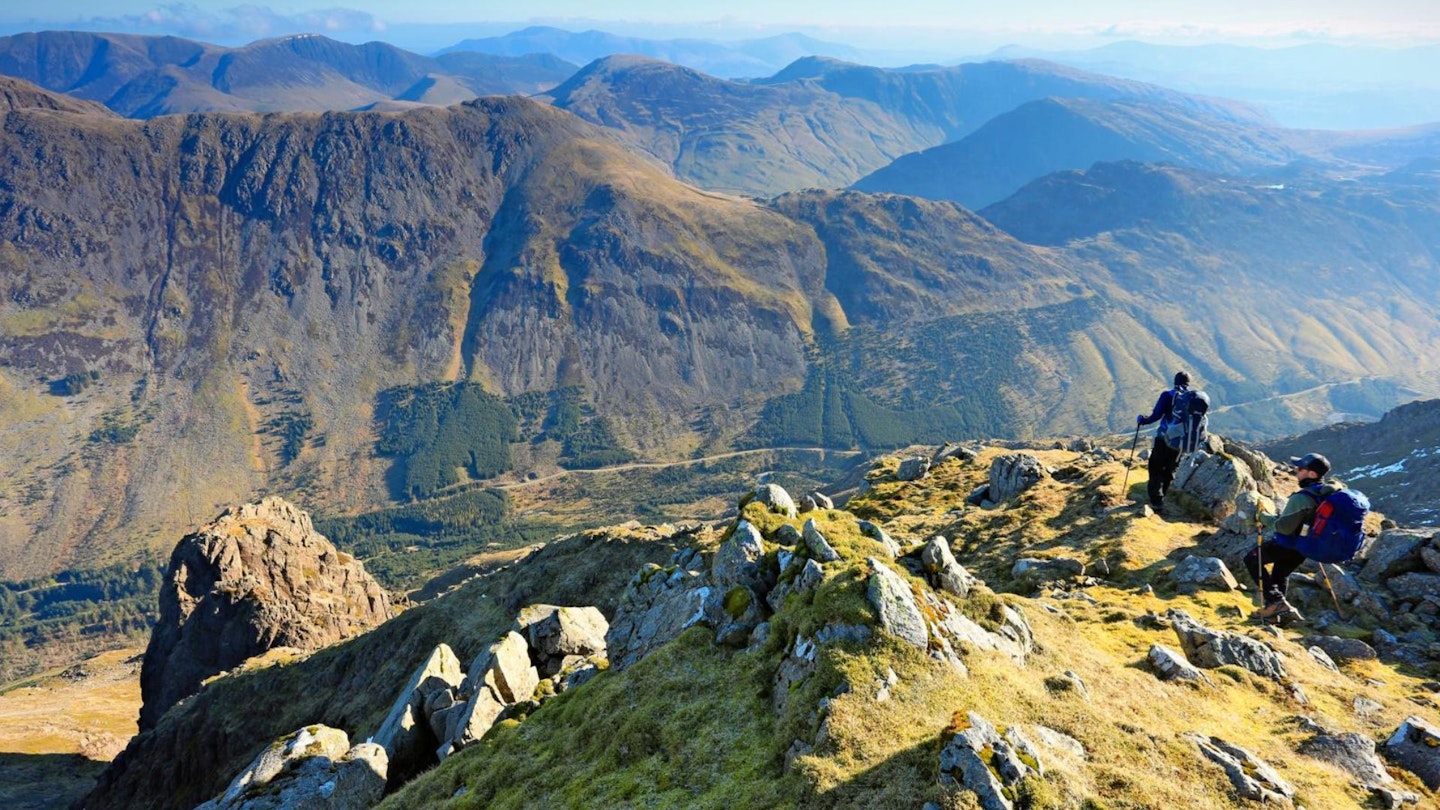
1820: Pillar Rock becomes known to early tourists as one of the wonders of the Lake District.
1826: The first recorded ascent is made by shepherd JohnAtkinson, via the broken scramble now known as the Old West Route.
1850: A bottle is discovered on the summit containing the names of previous summiteers on the rock, mostly shepherds. It pre-dates W P Haskett-Smith’s ascent of NapesNeedle by 36 years.
1888: Wordsworth pens The Brothers, featuring the passage: You see yon precipice—it almost looks / Like some vast building made of many crags, / And in the midst is one particular rock / That rises like a column from the vale, / Whence by our Shepherds it is call’d, the Pillar.
1891: Haskett-Smith ascends the 350ft North Climb – Pillar Rock’s first major climbing route.
1908: Alfred Heaton Cooper paints his classic view of Pillar Rock from Ennerdale.
1913: An ascent by George Mallory crowns a golden age for Pillar Rock.
1963: A 10-year siege by the Pillar Mountaineering Club of Whitehaven adds 30 new routes.
About the author
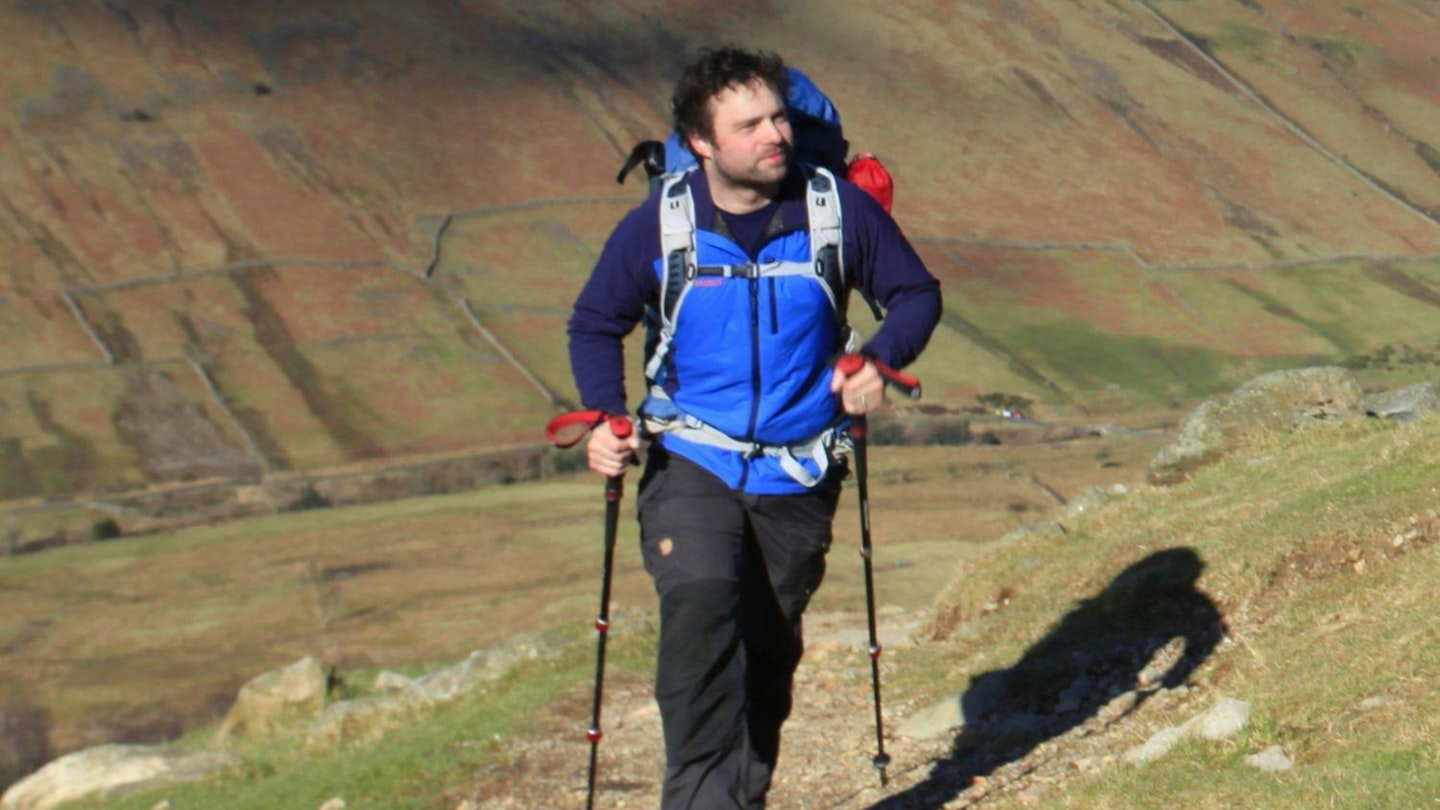
Simon Ingram is a former Trail magazine and National Geographic Online editor. He's also the author of two critically acclaimed hillwalking books – Between the Sunset and the Sea and The Black Ridge – and has written for the Guardian and Times, among many others.
